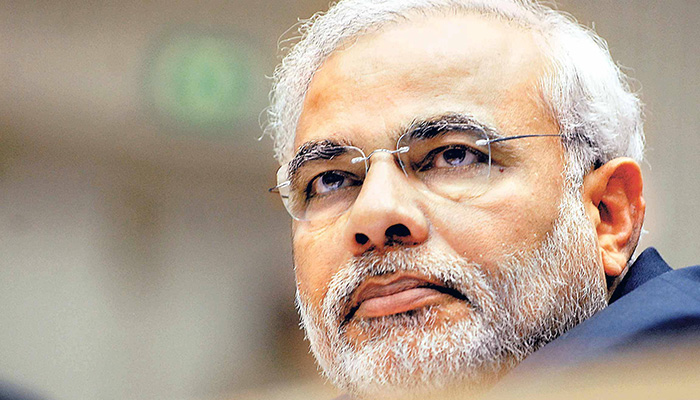Why is Modi government finding it difficult to handle 'recession like' situation whereas Manmohan Singh's government actually handled the 2009 global recession with ease?
1. Manmohan government had handled the 2009 global recession but saying that they handled it successfully is wrong*.
2. They just postponed the crisis to the coming years and new government by postponing bill payments, borrowing dollars to be paid after 5 years and printing more currency.
3. Yet unemployment happened, dollar nosedived to Rs 68 from Rs 60, automobile sales slumped, CAD ( current account deficit) reached all-time high and share market Nifty index plunged 30%.
4. There are following reasons for a perceived lesser effect of the 2009 crisis compared to now. Being media-friendly helped them create less noise on TV and social media was not as spread as it is in 2019.
5. The share of formal economy ( white ) was less and informal ( black) was substantial. For example, a house bought in 1 crore got registered in 50–60% price i.e. Rs 60 lakh.
6. Now bank would lend 85% of the registered value so it would be registered at 50 lakh, rest money would come from informal sources. bank's risk was reduced. Even if the borrower failed to pay, in the auction , it will be bought for more than Rs 50 lakh, say 55 lakh, so the bank had no risk.
7. Now see the current scenario where Rs 1 crore house would be registered at 80 to 85% cost i.e. 85 lakh. It may be financed for 70 lakh. Now if the borrower fails to pay, the bank may still find it difficult to auction it for 75 lakh when the market is down. The black economy worked as a backup economy, which remained unaffected by regulations. Now the formal economy's share has increased post demonetization and GST.
8. More we move to the formal (White) economy, the risk of recession will increase if the economy is mismanaged. This happens regularly in western countries, which have almost no black economy.
9. Manmohan government did nothing more than copying US Federal Reserve Chairman Allen Greenspan's Quantitative Easing Program in which the government printed more dollars. The value of printed currency increased 3 times of what it was before 2007.
10. The US could do it because the dollar is a global currency that can be absorbed easily worldwide but excess Rupee printing caused inflation rise which had become quite severe by 2013.
11. Much of that money was siphoned by businesses, politicians, and bureaucrats in various scams in the UPA-2 period of 2009–14.
12. To make up the shortfall in tax collection, in Sept 2013, new RBI governor Raghuram Rajan came up with a scheme of borrowing 30 billion dollars from NRIs at 3.5% interest which was to be paid after 4 years and Modi government paid that.
13. In today's term, it would be Rs 2 lakh crores. Crude oil was bought in 2013–14 from Iran on credit for which the Modi government paid it back 6 billion dollars in 2016. Inflation could be controlled only after demonetization in 2016.
14. See this table taken from the RBI website where value of currency notes almost doubled in 2–3 years after the 2009 recession from 5 lakh crores to 10 lakh crores while normal yearly growth in currency is between 15 to 20%.
15. In the US , new money was used to acquire assets of the failed corporations or revive big corporations at low share prices. US government later sold the shares at higher prices and made a profit in a couple of years.
16. In India, the excess printed currency was provided to banks to lend so that industry and demand would rise. But banks offered that to bogus industries and businesses linked to politicians and media personalities and without looking over the eligibility of borrowers or the project
17. These actions led to jobless growth and default with NPA but Banks continued covering up them until 2015 by refinancing, restructuring the expired loans, but RBI strictness in 2016 brought it to everyone's view.
18. Big-ticket defense deals like Rafale, S400, etc added 1 lakh crore liability in the last 2 years. One Rank One Pay was settled in this government period.
19. GST is still having teething troubles as state government corrupt bureaucrats are still allowing 50% goods sold without the GST route and revenue is not rising as expected.
20. BJP government also resorted to Mudra loans of about 1 lakh crore without collateral, Ujjwala subsidy, Rs 60000 crore dole out to farmers before LS elections in 2019, not shutting loss-making PSUs like BSNL, Air India, etc,
21. while extracting every year worth 2 lakh crore reserves of good PSUs like ONGC, HPCL, Coal India, disinvestment, etc and used it for subsidy funding instead of putting it to infrastructure building.
22. The economy has been consistently mismanaged till 2018 and it has expanded to 2.5 trillion dollars and now Quantitative Easing will not work as it worked in 2009.
23. We have added more population of unemployed educated people, more automation has happened everywhere. Our Regulatory bodies like RERA, TRAI, RBI, GST Council have failed us by not acting in time.
24. Land reforms, Labour laws, Bank Consolidation have been postponed for years and these are being done now in 2019.
25. Current situation of Indian Economy is the result of years of mismanagement, delays in reforms, adoption of short cut methods for long term problems and policy paralysis coupled with weak regulatory institutions headed by weak personalities
26. The good point is that, with real Recession visible everywhere, the government will not be able to brush it under the carpet and it will have to go for 1991 like fast-paced reforms. But the result would come only after 2–3 years.



Comments